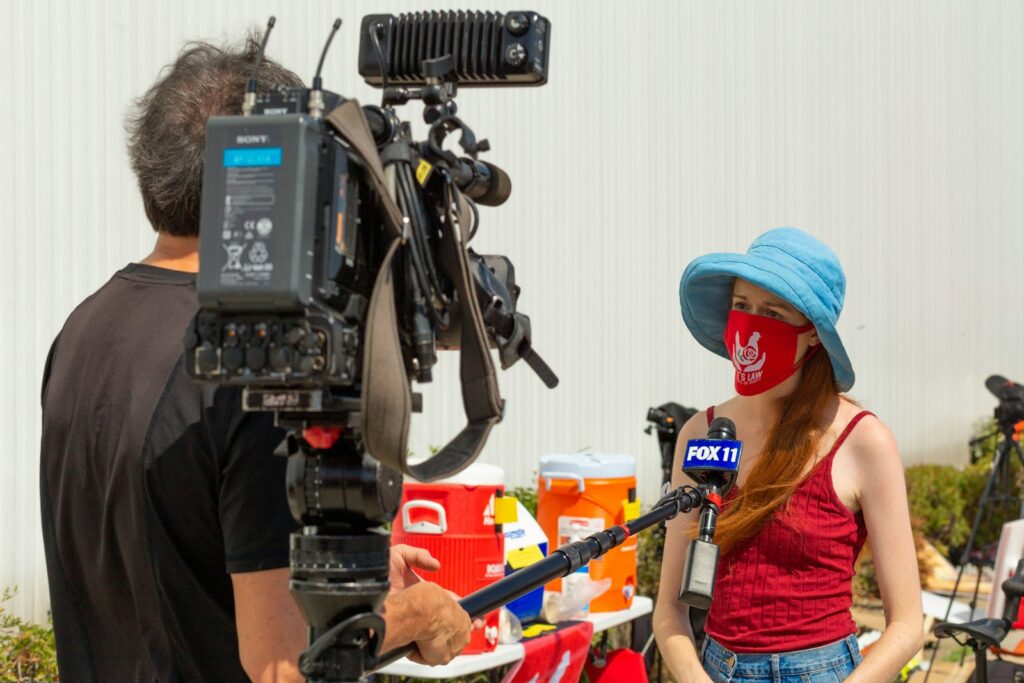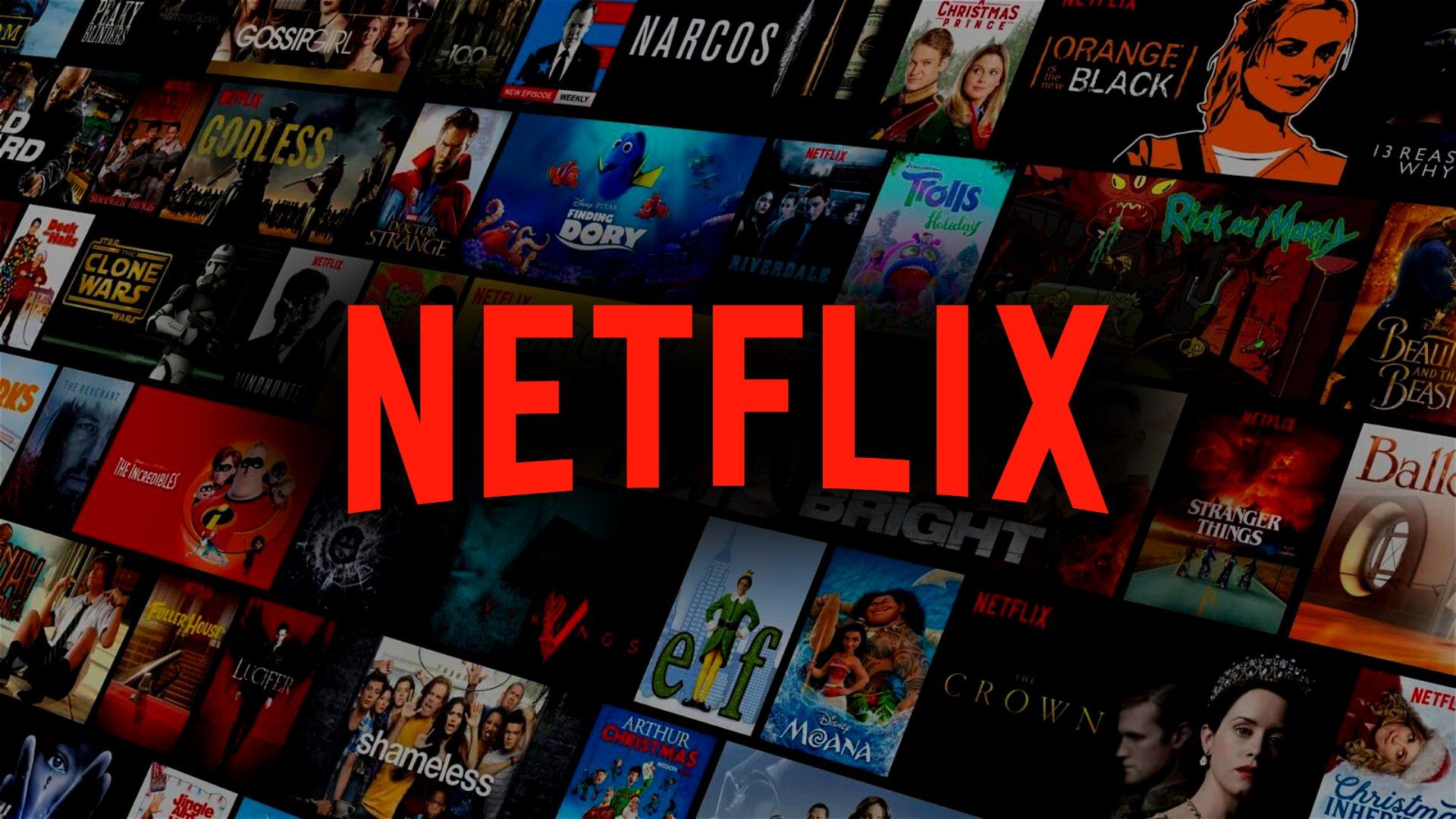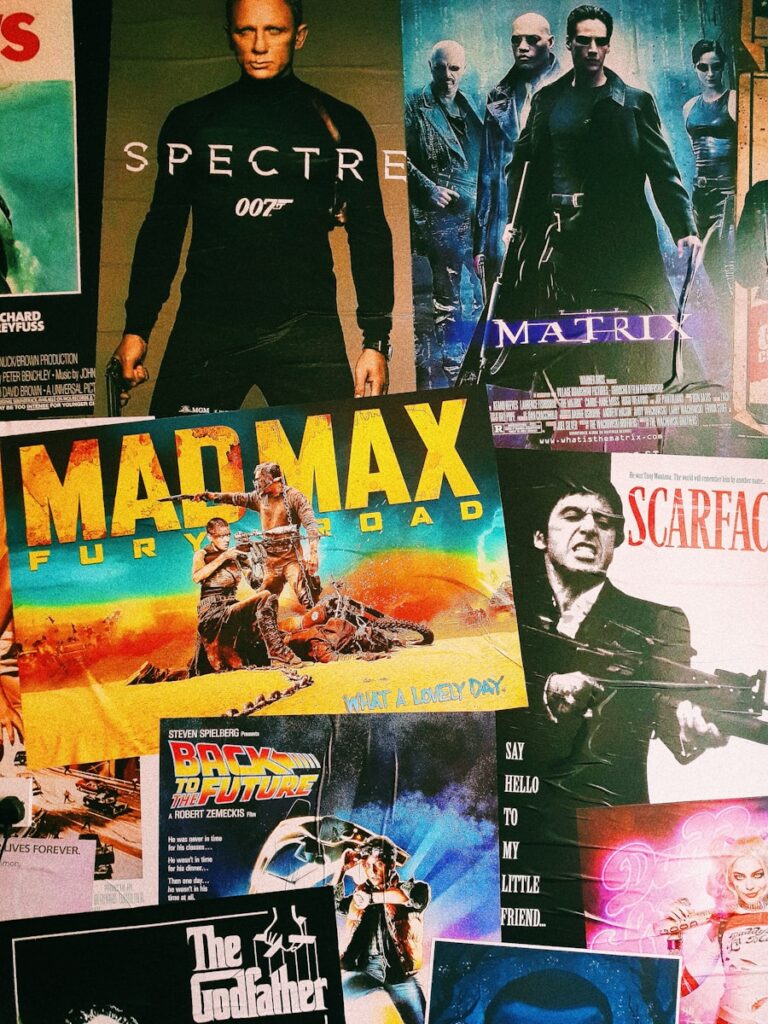
Hollywood has long been a place of booms and busts, a dynamic industry constantly reinventing itself amidst technological shifts and evolving consumer habits. Yet, the period following May 2023, marked by unprecedented strikes from writers and actors, has been described by some as an existential threat, a “crisis” that has left aerial cinematographers like Michael Fortin on the verge of homelessness and production levels significantly down across the board.
Indeed, the euphoria of the “streaming wars” — a decade-long battle where studios invested billions to catch up with new players like Netflix and Hulu — has undeniably given way to a stark reality. The good times, characterized by a rampant content bubble fueled by Wall Street’s insatiable demand for subscriber growth, ground to a halt. However, beneath the immediate pain and widespread layoffs, a crucial transformation is underway, one that is not merely a decline but a necessary correction laying the groundwork for a more sustainable and ultimately resilient entertainment industry.
This article delves into the intricate mechanisms through which Hollywood is navigating this tumultuous period. Far from merely witnessing a collapse, we are observing a deliberate, albeit painful, recalibration where profitability, strategic efficiency, and a renewed focus on core business principles are shaping the industry’s future. The insights reveal how key players are adapting to forge a more robust and enduring model for content creation and distribution.

1. **The Unsustainable Content Bubble’s Correction**The initial phase of the streaming wars was characterized by a gold rush mentality, where tech giants like Netflix experienced record growth, and legacy studios saw their share prices soar merely for launching their own streaming services. This frenetic competition, largely driven by Wall Street’s reward system for subscriber numbers over actual profit, led to an unprecedented overheating of the content market. As Matthew Belloni, founder of Puck News, aptly put it, “The air has come out of the content bubble.”
Just a few years ago, there were as many as 600 scripted live-action series airing, a testament to the immense, and ultimately unsustainable, spending spree. Companies poured vast sums into content acquisition and original productions, believing that sheer volume and exclusivity would guarantee market dominance. This led to an artificial inflation of production costs and a relentless chase for new programming.
However, this paradigm shifted abruptly when the stock market ceased rewarding this growth-at-all-costs strategy. Netflix, initially a beneficiary, saw its stock crash (though it has since recovered), and many other companies began struggling significantly to achieve profitability. This market correction, though painful for many workers and studios, was a necessary rebalancing act, forcing the industry to move away from speculative investment towards a more fiscally responsible and sustainable content strategy.

2. **Netflix’s Unrivaled Dominance and Strategic Victories**For a time, Netflix, despite its early lead, appeared vulnerable, losing subscribers for two consecutive quarters in 2022. This hiccup, combined with gargantuan spending, raised legitimate concerns about its plateauing growth and the future of its ambitious content strategy. However, the tide has unequivocally turned in its favor, solidifying its position as the undisputed leader in subscription streaming.
With 260 million paying customers worldwide, Netflix has far outpaced its direct competitors. The company impressively added over 13 million subscribers during the fourth quarter, and its stock has surged roughly 90% over the last year. This remarkable recovery and continued expansion have led many analysts to make a bold proclamation: the streaming wars, as a competitive race for dominance, are over, and Netflix has emerged victorious.
Crucial evidence of this triumph lies in the behavior of rival studios. Desperate to generate revenue, these competitors are now licensing more of their marquee programs to Netflix, including HBO’s acclaimed series “Six Feet Under” and “Insecure.” This marks a significant reversal from years of holding onto popular shows and big action movies exclusively for their own platforms, underscoring Netflix’s magnetic draw and indispensable reach.
Jeffrey Wlodarczak, chief executive of Pivotal Research Group, encapsulated this shift, stating, “Their competitors are so desperate to make money, they’re giving this content to Netflix. This is what winning is.” Netflix executives, for their part, exude unwavering confidence, with CFO Spencer Neumann declaring, “We are just getting started.” He emphasized the vast remaining potential, noting Netflix occupies “less than 10% of the view share in every country in which we operate,” a testament to the enormous runway still available for growth.

3. **The Shift from Growth to Profitability**The relentless pursuit of subscriber growth, often at the expense of profit, defined the early years of the streaming wars for many legacy media companies. Disney, Paramount, and Warner Bros. Discovery aggressively invested billions, effectively sacrificing traditional television and box office revenues to fuel their ambitious direct-to-consumer (DTC) operations. This strategy, initially encouraged by Wall Street, proved unsustainable in the long run.
As the content bubble burst and investor sentiment shifted, Wall Street began to exert pressure on these traditional media giants. The focus rapidly pivoted from subscriber volume to financial viability and profitability within their streaming segments. This external pressure compelled businesses to re-evaluate and subsequently rein in their excessive spending on DTC content and operations.
This crucial shift is not merely about cutting costs; it’s about fundamentally reshaping business models to achieve a profitable equilibrium in the new streaming landscape. Studios are actively working to understand how to generate consistent revenue in an environment where traditional cable TV, funded by commercials, is losing ground. The current economic climate demands that every investment in content must contribute tangibly to the bottom line, moving past the era of pure subscriber acquisition at any cost.
Read more about: The Great Automotive Shake-Up: 15 Brands Navigating the U.S. Market’s Shifting Sands

4. **Monetizing the Subscriber Base: Cracking Down on Password Sharing**One of Netflix’s most impactful strategic moves in recent times has been its decisive crackdown on password sharing. For years, account sharing was a tacitly accepted practice, but as subscriber growth slowed and the imperative for profitability intensified, Netflix transformed this widespread habit into a significant revenue opportunity. The company’s direct approach involved adding restrictions that encouraged individuals borrowing accounts to convert into paying subscribers.
This initiative yielded impressive results, contributing substantially to Netflix’s financial health. The company saw its net income increase dramatically to $938 million in the fourth quarter, a significant jump from $55 million a year prior, while revenue also rose by 12.5% to $8.8 billion. This demonstrates a clear and effective pathway for streamers to convert latent demand into direct revenue.
The success of Netflix’s strategy has not gone unnoticed by its competitors. Other major streaming services, including Disney’s Hulu, Disney+, ESPN+, and Warner Bros. Discovery’s Max, have also signaled their intentions to tighten limits on password sharing. This collective industry shift underscores a critical recognition: monetizing the existing, and often unpaying, audience base is a vital component of achieving long-term profitability and stability in the streaming era.

5. **Content Diversification: Beyond Scripted Series**To maintain its competitive edge and cater to a wider array of tastes, Netflix has strategically diversified its content offerings far beyond its initial focus on scripted drama and comedy. This expansion now includes a robust mix of reality TV shows, non-English-language originals, live television events, games, and sports documentaries, transforming the platform into a comprehensive entertainment hub.
A prime example of this diversification is Netflix’s monumental deal to become the exclusive host for WWE’s weekly pro wrestling show “Raw” starting in 2025. This move is projected by analysts to significantly boost Netflix’s advertising business, particularly given “Raw”’s impressive reach of 17.5 million unique viewers annually on USA Network. It also promises to increase WWE’s global audience, demonstrating a win-win scenario for both parties.
Brandon Riegg, vice president of nonfiction series at Netflix, expressed significant optimism about the venture, noting its potential to introduce the show to new fans while servicing existing ones. This embrace of live content and major sports entertainment franchises signifies a broader industry trend towards capturing diverse viewership and unlocking new revenue streams beyond traditional subscription models, enhancing the overall value proposition of streaming services and making them more resilient to content-specific ebbs and flows.

6. **Global Production Hubs and Content Efficiency**Netflix’s early entry into the streaming arena in 2007 provided a significant head start, allowing it to strategically establish production hubs around the world well before many Hollywood competitors. This foresight has been a cornerstone of its sustained success, particularly in regions like South Korea, where Netflix has cultivated a highly successful pipeline of K-dramas. These non-English language originals are designed for global appeal and can be efficiently dubbed into many different languages, broadening their reach and impact.
This global production strategy is not merely about cultural expansion; it is a fundamental pillar of content efficiency and cost-effectiveness. Producing content overseas is often less expensive than developing programs in the United States, allowing Netflix to stretch its content budget further. The ability to generate globally resonant hits from these diverse locations has become a distinct competitive advantage.
As industry strategist Brandon Katz from Parrot Analytics noted, if companies can consistently produce global hits like “Squid Game,” they get “more bang for its buck.” He added, “The more they’re able to get some of that South Korean programming, Indian programming, Spanish-language programming, to really kind of pop on the charts here in America, the longer their dollar goes, the less they have to rely on more costly American-made series.” This model points to a future where efficient, globally sourced content is key to Hollywood’s economic viability.
Read more about: Elon Musk’s Definitive Stance: Separating Fact from Fiction in the Tesla Phone Frenzy

7. **Technological Innovation in User Experience**A critical, yet often understated, factor in Netflix’s enduring lead is its sophisticated technological infrastructure and unparalleled user experience. The company has meticulously built a robust platform that leverages advanced recommendation algorithms, suggesting titles and promoting trailers tailored precisely to a user’s past viewing habits and expressed tastes. This personalization creates a highly engaging and sticky experience, driving continued viewership and satisfaction.
This technological prowess translates directly into content success. As Brandon Katz explained, Netflix’s ability to build scale quicker than anyone else leads to “a shorter road for a new original to become a hit because they have such a wider audience available to sample.” Their sophisticated system ensures that new content is effectively discovered by the right audiences, maximizing its potential for widespread appeal and minimizing wasted marketing efforts.
Even Walt Disney Co. Chief Executive Bob Iger, a formidable competitor, publicly acknowledged Netflix’s technological superiority at a Morgan Stanley conference, stating, “obviously the gold standard there is Netflix.” He further emphasized Disney’s commitment to “creating and developing all of that technology,” admitting, “We need to be at their level in terms of technology capability.” This recognition from a rival CEO underscores Netflix’s role not just as a content provider, but as a technological benchmark, pushing the entire industry towards more efficient and user-centric content delivery systems, which is vital for long-term viability.
Read more about: Beyond the Badge: Uncovering the Hidden Flaws in 14 Fan-Favorite Vehicle Models

8. **The Evolution of Pricing Models: Bidding Farewell to the “Cheap Streaming Era”**The initial allure of streaming platforms was their promise of vast content libraries delivered directly to consumers at an attractively low, often flat, monthly rate. This era, characterized by aggressive pricing designed to rapidly acquire market share, is now definitively drawing to a close. As subscriber growth across the industry has naturally begun to plateau and the paramount imperative for profitability intensifies, major streaming services are systematically overhauling their pricing structures, signaling a fundamental and irreversible shift in how consumers will access and pay for premium entertainment.
This strategic pivot reflects a sober and necessary reality for streamers: the initial gold rush for market dominance, frequently subsidized by unsustainable levels of content spending and razor-thin margins, is over. Platforms including Netflix, Disney+, Apple TV+, Hulu, and Warner Bros. Discovery’s Max have all either implemented or signaled upcoming price increases for their subscription tiers. These widespread adjustments are a direct and calculated response to the persistent economic pressures and investor demands that have fundamentally reshaped the streaming landscape since the early, high-growth days of the COVID-19 pandemic.
The move is not merely about incrementally increasing average revenue per user, but about instilling a new, rigorous economic discipline within their direct-to-consumer operations. With Wall Street now intensely scrutinizing tangible profitability over mere subscriber volume, streaming companies are compelled to ensure that their extensive content investments and operational outlays yield a clear and consistent return. This fiscal scrutiny is driving the transition towards models where every dollar spent must contribute tangibly to the bottom line, moving beyond the era of subscriber acquisition at any cost.
Beyond simple price hikes, the industry is also strategically expanding its offerings with the introduction and promotion of ad-supported tiers. These hybrid models provide a slightly more affordable entry point for cost-conscious consumers while simultaneously unlocking entirely new revenue streams through advertising. This diversified approach to revenue generation, incorporating both subscription fees and advertising, is designed to create a more robust and resilient financial foundation for the continuous creation and acquisition of premium content, ensuring long-term sustainability for the sector.

9. **The Resurgence and Renewed Value of Legacy Content**Amidst the significant disruptions wrought by the streaming wars and the ensuing labor strikes, an unexpected but critically important hero emerged for many platforms: their deep libraries of legacy content. As the pipeline for fresh productions dwindled due to work stoppages and studios grappled with new economic realities, older, beloved series and films experienced a remarkable and often unanticipated resurgence in viewership on streaming services. This phenomenon profoundly underscored the enduring value and magnetic appeal of established intellectual property, proving that comfort, familiarity, and proven storytelling hold significant weight for global audiences.
A prime illustration of this trend is the legal drama “Suits,” a USA Network series that originally aired from 2011 to 2019. Despite concluding its broadcast run years ago, “Suits” gained a monumental surge of cultural relevance and viewer engagement in 2023 when it became available for streaming on Netflix. Its unexpected, chart-topping popularity during a period of new content scarcity demonstrated the immense power of deep back catalogues to not only engage existing subscribers but also to attract new ones, all often with minimal additional marketing expenditures. This unexpected hit proved to be an indispensable asset during a challenging content drought.
This widespread rediscovery of “comfort food shows” like “Suits” and “Ugly Betty” provided streamers with invaluable, high-engagement content during periods when fresh productions were halted. More importantly, it illuminated a crucial, often underestimated, component of a robust and sustainable streaming content strategy: the ability to effectively leverage existing, well-known titles to maintain consistent subscriber engagement and attract new viewers. This recognition encourages a more holistic approach to content curation, one that intelligently balances the pursuit of expensive new originals with the proven, cost-effective, and deeply appealing draw of a carefully curated and strategically deployed back catalogue. It’s a testament to the fact that quality storytelling, regardless of its original air date, continues to resonate deeply with audiences, thereby stabilizing viewing patterns and offering a predictable content pipeline that mitigates risks associated with production cycles.
Read more about: Forrest Frank’s Bold Stand: How a Viral Singer Embraced Faith and Lost 30,000 Followers

10. **Fiscal Discipline and Restructuring Amidst Market Pressures**The shift from a “growth-at-all-costs” mentality, which defined the initial phases of the streaming wars, to an unrelenting pursuit of genuine profitability has precipitated a profound and necessary fiscal restructuring within Hollywood’s legacy media companies. For many years, industry titans such as Disney, Paramount, and Warner Bros. Discovery aggressively diverted billions of dollars, frequently at the expense of established, profitable revenue streams from traditional television and the box office, all to fuel their ambitious direct-to-consumer (DTC) streaming ventures. This expansive, capital-intensive strategy, while initially encouraged by Wall Street’s focus on subscriber metrics, ultimately proved to be unsustainable in the long run.
Investor sentiment has notably and decisively turned, exerting immense pressure on these traditional players to rein in their previously excessive spending. The market correction demanded a swift and fundamental pivot towards achieving tangible financial viability within their streaming segments. This powerful external force compelled companies to meticulously re-evaluate every aspect of their content investments and operational expenditures, moving decisively away from speculative content bubbles towards a business model rigorously grounded in responsible fiscal management and measurable returns. The era of unchecked spending for the sake of market share is unequivocally over.
Even Netflix, despite its eventual recovery and current dominance, faced initial investor concerns regarding its substantial debt levels during its earlier growth phases. The company proactively addressed these anxieties with strategic maneuvers, notably declaring in 2021 that it would no longer require external financing for its day-to-day operations. This pivotal commitment to self-sufficiency and robust financial health serves as a crucial blueprint and benchmark for the wider industry, demonstrating unequivocally that prudent financial restructuring, including proactive debt management and aggressive operational streamlining, is absolutely paramount for achieving long-term stability and resilience in the highly competitive and capital-intensive streaming landscape.
This newfound emphasis on fiscal discipline is not just about cutting costs; it’s about fundamentally rethinking how content is developed, produced, and distributed to ensure every investment contributes tangibly to the bottom line. It’s a systemic overhaul designed to eliminate inefficiencies and build a leaner, more agile enterprise that can thrive in an environment where capital is no longer limitless and every dollar invested must justify its existence through profitability. This ensures that the industry’s significant resources are deployed with maximum strategic impact.
Read more about: Sweetgreen’s Bold Bet: Beefing Up Protein to Reinvigorate Corporate America’s ‘Sad Desk Salads’

11. **Strengthening Labor Protections and the AI Clause**The unprecedented writers’ and actors’ strikes of 2023, lasting multiple months and effectively bringing Hollywood production to a standstill, proved to be a watershed moment for labor relations in the entertainment industry. Far from being a mere disruption or setback, these prolonged strikes were instrumental in securing vital new union contracts that directly and comprehensively address the evolving economic and technological challenges of the streaming era, particularly concerning fair compensation, transparent data, and groundbreaking protections against emerging technologies like artificial intelligence.
The Writers Guild of America (WGA) and SAG-AFTRA, the Screen Actors Guild – American Federation of Television and Radio Artists, successfully achieved many of their key aims in their new contracts. These included substantial increases in minimum pay rates and improved residual payments for streaming content, addressing long-standing grievances about how creatives were compensated for the success of their work on digital platforms. Critically, these new agreements also established groundbreaking clauses specifically designed to protect creative talent from the unchecked and exploitative use of artificial intelligence, setting a crucial precedent for future negotiations across industries.
Duncan Crabtree-Ireland, chief negotiator for SAG-AFTRA, eloquently articulated the intrinsic value of human talent amidst technological shifts, stating, “What makes these companies special, what gives them their unique ability to create value is their relationship with creative talent.” These robust new contracts are not just about immediate financial gains for workers; they represent a fundamental and necessary restructuring of the relationship between labor and capital in Hollywood. By institutionalizing a greater degree of worker protection and financial transparency, the industry is building a more equitable and resilient framework that explicitly recognizes, values, and appropriately remunerates the creative engine driving its entire output. This safeguards against the “downward pressure” on wages and working conditions that previously characterized the shift towards mini-rooms and short-term employment.
Read more about: Understanding the Federal Acquisition Regulation: A Comprehensive Look at U.S. Government Procurement Standards

12. **Strategic Geographical Diversification and Tax Incentives**While Netflix pioneered the strategic concept of establishing global production hubs to achieve greater cost efficiency and cultural reach, the broader Hollywood industry is now increasingly embracing a comprehensive geographical diversification approach. This trend is heavily influenced by the availability of attractive tax incentives offered by various states and countries, turning the location of production into a significant strategic decision that balances creative vision with economic prudence.
The impact of this shift is starkly evident in recent production statistics: the number of US productions during the second quarter of 2024 was reportedly down approximately 40% compared to the same period in 2022. Concurrently, global production experienced a 20% decline over that timeframe. Part of this recalibration is undeniably driven by the studios’ desire to leverage more cost-effective production environments outside traditional Hollywood centers and benefit from governmental incentives explicitly designed to attract film and television projects. These incentives make international or out-of-state filming significantly more financially advantageous.
Los Angeles leaders themselves are acutely aware of this challenge and the economic impact of production flight. Mayor Karen Bass recently established a task force explicitly tasked with considering new incentives to retain and attract film production within Hollywood, acknowledging its critical role as a “cornerstone” of the regional economy and a provider of hundreds of thousands of jobs. This proactive response underscores the intense competition for production dollars and the necessity for regions to remain competitive.
As industry strategist Brandon Katz from Parrot Analytics aptly noted, if companies can consistently produce global hits from diverse locations, particularly non-English language programming like “Squid Game,” they achieve “more bang for its buck.” He further elaborated that “The more they’re able to get some of that South Korean programming, Indian programming, Spanish-language programming, to really kind of pop on the charts here in America, the longer their dollar goes, the less they have to rely on more costly American-made series.” This model, driven by economic prudence and the strategic deployment of incentives, is becoming an indispensable tool for studios to manage burgeoning production costs and secure a more economically viable and globally resonant future for content creation.
Read more about: Behind the Drone Curtain: Unpacking Russia’s Ambitious Drive to Dominate Unmanned Warfare

13. **Industry Consolidation as a Survival Mechanism**The current economic climate, characterized by intense competition, a saturated streaming market, and a renewed focus on profitability, is inevitably driving significant industry consolidation within Hollywood. The “merging of big studios” is not merely an incidental outcome of market forces but a deliberate, strategic adaptation, as established media companies seek to achieve greater economies of scale, streamline overlapping operations, and enhance their collective competitive edge in a rapidly evolving entertainment landscape. This trend is anticipated to continue reshaping the power dynamics and operational structures of the industry for years to come.
Recent reports detailing multiple entities in talks to acquire Paramount, one of Hollywood’s long-standing major studios, serve as a potent example of this ongoing dynamic. Such high-stakes mergers and acquisitions are typically pursued to pool vast resources, reduce extensive overheads, and eliminate redundant departments and functions, all with the ultimate goal of improving financial stability, enhancing market position, and creating more formidable entities capable of competing against global tech giants. This process is about survival and securing a dominant foothold in the next phase of entertainment.
While these consolidation moves can undoubtedly lead to further disruption and, unfortunately, job displacements in the short term, they are widely viewed by industry analysts and executives alike as inevitable and necessary steps towards creating stronger, more agile, and financially robust enterprises capable of weathering future economic downturns and technological upheavals. As Duncan Crabtree-Ireland, chief negotiator for SAG-AFTRA, succinctly observed, “some consolidation in Hollywood was inevitable.” This strategic restructuring, though potentially painful for some workers and possibly limiting for content diversity in certain respects, is seen as a fundamental, Darwinian evolution for the industry to achieve a sustainable economic model, ensuring that the core of Hollywood’s renowned content creation capability enduring and thrives.
Read more about: Tricolor’s $200M Fraud: Unpacking the Collapse of a Subprime Auto Giant and Its Ripple Effects on US Banking

14. **Embracing Creative Agility and Hollywood’s Inherent Resilience**Despite the often-proclaimed narrative of Hollywood’s “death” or “existential crisis,” the industry continues to demonstrate an inherent and remarkable capacity for reinvention, driven by its unique and indispensable relationship with creative talent. This current period of intense disruption, far from signaling an end, is forcing an essential and profound recalibration that ultimately highlights the industry’s enduring agility and its intrinsic ability to adapt not only to technological advancements but also to fundamental economic shifts.
As veteran industry observer Duncan Crabtree-Ireland aptly puts it, Hollywood “always thinks it’s in crisis.” He further elaborates, “It is a town that constantly faces technological innovation – all kinds of change – which is part of the magic. Part of keeping content fresh is everyone having the idea that things don’t always have to be the way they’ve been.” This insightful perspective powerfully underscores that the current challenges, while formidable and undeniably painful for many, are fundamentally part of a historical pattern of continuous adaptation and evolution that has consistently defined the entertainment capital since its inception.
The renewed emphasis on core business principles, stringent financial viability, and a profound appreciation for the human element of storytelling and craft is not a retreat but a strategic advance. It is paving the way for a more robust, diversified, and ultimately sustainable entertainment ecosystem. The industry is not merely surviving the tumult of the streaming wars; it is actively transforming itself, shedding unsustainable practices and proactively building a future where innovation, operational efficiency, and artistic integrity can not only coexist but flourish harmoniously.
This profound resilience, honed over a century of adapting to disruptive technologies from network television to cable, from VHS tapes to DVDs, and now to global streaming, ensures that Hollywood, in its ever-evolving form, will continue to deliver the compelling, diverse, and globally resonant stories that captivate audiences worldwide. The challenges are real, but the industry’s capacity for strategic adaptation and creative rebirth remains its most powerful asset.
Read more about: What Happened to Bridget Fonda? Unveiling the Enigmatic Retreat of a Hollywood Royal, From Silver Screen Stardom to a Deliberately Private Life
The prevailing narrative of Hollywood’s “death” or “existential crisis” often overlooks the profound, yet undeniably painful, structural adaptations underway. The streaming wars, initially perceived as an unmitigated disruptive force, have paradoxically catalyzed a much-needed industrial renaissance. By compelling a return to rigorous fiscal discipline, strategically elevating the intrinsic value of diverse content libraries, empowering labor through stronger protections, and fostering global operational efficiencies, Hollywood is not just merely surviving but is actively constructing a more sustainable, financially prudent, and ultimately resilient future. This transformative era, therefore, should be viewed not as the twilight of an industry, but as its strategic re-engineering and recalibration for a dynamic new golden age of entertainment.



